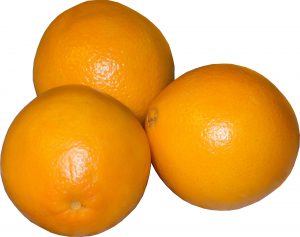
By Debbie Arrington
What’s up with the giant oranges?
Backyard growers and longtime farmers both experienced the same phenomenon this winter: king-size navel oranges. Normally, navel oranges measure about 3 inches across. This month, these oversized oranges easily topped 4 inches, looking more like tangerine-hued grapefruit than familiar navels.
Another observation: While individual fruit grew quite big, the overall numbers seemed small. Trees bore fewer oranges, but put more effort into the ones that did develop.
This was true whether the navels grew in a Citrus Heights backyard or massive Tulare County orchards.
“Everybody’s seeing it,” said Joel Nelsen, president of the California Citrus Mutual, which represents about 75 percent of the state’s commercial citrus growers. “What happened this year, the general volume on the trees is down significantly. The nutrients going through the tree have to feed fewer pieces of fruit. Those there get that much more nutrients.”
So, fewer – but bigger – navels.
Rain further complicates matters. Usually the best place for a home gardener to “store” citrus is on the tree until ready for use. But not this year with these giant navel oranges.
“Pick as soon as possible,” Nelsen advised backyard growers. “If the oranges get too big, they start to dry out.”
Then instead of being full of juice, the flesh will be all fibrous pulp – and a lot less appetizing.
Another twist to this strange citrus season: Only navel oranges were affected, probably as an after-effect from five years of drought. Other citrus trees bore good quality, normal-looking fruit – and lots of it.
“It has been a great year for my citrus,” said Chris Strutz, owner of Strutz Ranch in Sloughhouse. “Overall, (it’s) the best crop we have had. My trees have finally matured and are producing super-good fruit.”
Strutz grows dozens of citrus varieties from tiny kumquats to giant pomelos. He sells his citrus at his ranch, just off Jackson Highway, as well as at local farmers markets. Corti Brothers market in Sacramento carries his mandarins. His ranch’s farmstand currently is open 9 a.m. to 5 p.m. Saturdays.
Citrus takes many months to develop. For the best fruit, trees need a combination of summer heat and chilly (but not freezing) winter nights.
“The hot days and warmer than normal nights during the growing season helped my fruit develop with higher sugar levels,” Strutz said. “For example, our pomelo matured nicely and in the past we did not have enough heat for pomelo to ripen. Our late-season mandarins – Tahoe, Shasta and Gold Nugget (varieties) – have ripened early and are now prime super-nice.”
Strutz did see smaller than usual crops from his blood oranges and navels. The lack of cold nights in December may have kept the blood oranges from developing their characteristic color.
“We had a very light crop of blood oranges and the blood oranges are not as deep red as in the past,” Strutz noted. “Navels are also a light crop; big size, good quality.”
Just not very many.
While summer heat develops sugars, mild winters allow the fruit to hang on the tree longer. That lowers the acid in the fruit and increases the sweetness (at least to our taste buds). That’s why an orange picked in February may taste sweeter than one harvested in December off the same tree.
And remember: Valencia (or juice) oranges ripen later than winter navels. In the Sacramento Valley, Valencias might not be ready until March or April (or even later). So even though they look ready now, wait on the Valencias.
While citrus trees are frost sensitive, winter’s “kiss of chill” brings out intense colors (a brighter orange or more golden yellow) and thickens the skin, so the fruit stores longer.
Citrus doesn’t ripen (or develop more sugar) off the tree. Knowing when to pick is key. Color alone doesn’t determine full ripeness. Fruit should feel firm but have a little give. When picked, it should slip easily from the stem. (If you have to pull hard, it’s probably under ripe.)
Most of all, citrus requires patience, Strutz noted. Although a tree may bear a few fruit early on, it can take a decade or more for an orange tree to start consistently producing fruit. But once it gets going, it will keep producing for decades to come.
“It has taken a lot longer than I had expected – 10 years – to get good fruit,” Strutz said. “So, I guess you can tell folks they will get fruit after a few years, but they need to be patient – and really good fruit will come.”



One Response to It’s Giant Orange Season – from the Sacramento Bee